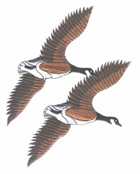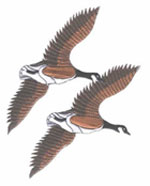Cuba was first inhabited by Native American Indians.
1492 The navigator Christopher Columbus discovered and claimed the island of Cuba for Spain.
30th April 1494 Christopher Columbus arrived in Cuba on his 2nd voyage to the Americas.
1508 The Spanish navigator Sebastian de Ocampo explored Cuba.
1511 Spanish conquest of Cuba began under the leadership of Diego de Velazquez, who established Baracoa and other settlements.
1514 Spanish soldiers conquered the natives of Cuba.
26th July 1515 Santiago was founded.
1523 Sugar was grown in Cuba for the first time.
From 1526 Slaves were shipped from Africa to Cuba.
1741 British troops briefly occupied Guantanamo Bay while warning against Spanish trade interests.
12th August 1762 A British force led by Admiral George Peacock and Lord Albemarle captured Cuba from Spain after a two month siege.
1763 A Treaty of Paris was signed and Havana was returned to Spain.
1810 The king of Spain was overthrown by Napoleon.
1868 to 1878 The country fought a ten year war of independence.
1895 to1898 A Second war of independence lead by Jose Marti. While the US declared war on Spain.
1886 Slavery in the country was abolished.
1895 Winston Churchill was garrisoned in Havana.
11th April 1898 American President McKinley asked Congress to authorise military intervention in Cuba.
1898 The US defeated Spain and all Spanish claims to Cuba were relinquished and cedes it to the US.
1902 Cuba became independent and Tomas Estrada Palma was made president. However, the Platt Amendment kept the island under US protection which gave the US the right to intervene in Cuban internal affairs.
1902 Tomas Estrada Palma was elected president.
1902 The USA adopted a limited occupation of Cuba up to and including 1934.
1903 The US received a permanent lease on Guamtanamo Bay and began to build a large naval base.
1906 to 1909 President Estrada resigned and the US occupied Cuban territory following a rebellion led by Jose Miguel Gomez.
1909 Jose Miguel Gomez became president following elections supervised by the US, however he was soon accused of corruption.
1912 Black protests against discrimination lead to US forces returning to Cuba.
1924 Gerado Machado instituted vigorous measures, forwarding mining, agriculture and public works, but subsequently established a brutal dictatorship.
1925 The Socialist Party was founded, forming the basis of the soon to be Communist Party.
1933 President Gerado Machado y Morales was overthrown in a coup d'etat led by Sergeant Fulgencio Batista, following great hardship that was endured during the Great Depression. Fulgencio Batista made himself president of Cuba.
1934 US relinquished its right to intervene in internal affairs of Cuba.
1944 Fulgencio Batista retired and Ramon Gray San Martin became President of Cuba.
1952 Fulgencio Batista took over power again.
1953 Fidel Castro led an unsuccessful revolution against president Batista.
1956 Fidel Castro and Che Guevara began a guerrilla war from there base in the Sierra Maestra Mountains in Eastern Cuba.
1958 US withdrew military aid to President Fulgencio Batista.
1st January 1959 Fidel Castro lead a Communist revolution along with Che Guevara and a 9000 strong rebel army capturing Havana and forcing the Cuban president Fulgencio Batista to leave Cuba. Castro went on to appointed himself as prime minister.
April 1959 Fidel Castro toured the U.S. and met up with Vice President Nixon.
9th March The First meeting of the USA Branch 4 Task Force.
September 1960 The CIA recruits organised crime figures Johnny Roselli, and through him Sam Giancana and Santos Trafficante, for plots to assassinate Castro.
19th December 1960 Cuba openly aligned itself with the Soviet Union and their Communist policies. A Cuban Communist State was set up with full Russian backing. Fidel Castro allowed the USSR to deploy nuclear missiles on the island.
January 1961 The U.S. and Cuba severed all diplomatic relations.
3rd January 1961 The U.S. terminated its diplomatic relations.
17th April 1961. 1,297 Cuban exiles including a few mercenaries supported by the CIA invaded Cuba in what became known as the ‘Bay of Pigs’ affair. The whole invasion was a CIA initiated offensive that was hoped would trigger an anti-Castro rebellion and to topple him from power. However, at the last moment the US refused to send more men and equipment and left the invasion force stranded on the beach. The attack collapsed two days later, with great loss of life and of the remainder most were capture and later killed on Castro’s personal orders.
3rd & 4th June 1961 Presidents Khrushchev and Kennedy held summit talks in Vienna regarding the Cuban Missile Crisis.
November 1961 Operation Mongoose, a covert operation against Cuba managed by counterinsurgency expert Edwin Lansdale was initiated.
March 1962 Operation Northwoods was presented to Secretary of Defence Robert McNamara. Northwoods contemplated faked and actual terrorist incidents which could be blamed on Castro, and used as a pretext for a US invasion of Cuba.
31st August 1962 Senator Kenneth Keating told the Senate that there was evidence of Soviet missile installations in Cuba.
11th September 1962 Soviet Foreign Minister Andrei Gromyko warned that an American attack on Cuba could mean war with the Soviet Union.
14th October 1962 U.S. satellite photos and subsequent U-2 aircraft flyovers uncovered proof of Soviet nuclear missiles being based in Cuba. The ensuing Cuban Missile Crisis had the world on the brink of nuclear annihilation. However, President Khrushchev backed down and removed his missiles when confronted by a full sea blockade of Cuba.
14th to 17th October 1962 The US Joint Chiefs of Staff strongly advised Kennedy to make an air strike (the discussions are referred to as the EX-COMM’s).
18th October 1962 Gromyko assured Kennedy that Soviet Cuban aid had been only for the "defensive capabilities of Cuba."
22nd October 1962 US Congressional leaders were shown the photographic evidence of the Soviet missile Cuban installations and the President addressed the nation regarding the Cuban crisis.
22nd October 1962 U.S. military forces went to DEFCON 3.
23rd October 1962 US President Kennedy received a letter from Khrushchev in which Khrushchev stated that there was a, "serious threat to peace and security of peoples."
23rd October 1962 US president Robert Kennedy spoke with USSR Ambassador Dobrynin.
24th October 1962 Soviet ships, en route to Cuba, reversed their course except for one.
24th October 1962 US Military forces went to DEFCON 2.
25th October 1962 US president Kennedy sent a letter to USSR president Khrushchev placing the responsibility for the crisis on the Soviet Union.
26th October 1962 USSR president Khrushchev sent a letter to US president Kennedy in which he proposed to remove his missiles if Kennedy publicly announces never to invade Cuba.
27th October 1962 An American U-2 aircraft was shot down over Cuba killing the pilot, Major Rudolf Anderson.
27th October 1962 A American U-2 aircraft strayed into Soviet airspace, near Alaska, and was nearly intercepted by Soviet fighters.
27th October 1962 President Kennedy sent President Khrushchev a letter stating that he will make a statement that the U.S. will not invade Cuba if Khrushchev removes his missiles from Cuba.
28th October 1962 President Khrushchev announced over Radio Moscow that he had agreed to remove the missiles from Cuba. Finally the Cuban Missile Crisis ended and the most perilous period in World History and the terrifying possibility of a Nuclear War was averted for the time being.
March 1963 Raids by Cuban exiles against Cuba launched from U.S. shores began to be shut down, although the National Security Council continued to approve some raids throughout 1963.
May 1963 Development of contingency plans for a coup in Cuba were undertaken, and revised over the summer and into fall.
July 1963 A major arms cache was raided at Lake Ponchartrain near New Orleans, and other raids occurred during the summer.
September 1963 The CIA reactivated contact with Rolando Cubela. Castro gave an impromptu interview and warned that U.S. leaders aiding terrorist plans to eliminate Cuban leaders will themselves not be safe. White House authorises William Atwood to explore talks with Castro representative.
October 1963 Desmond Fitzgerald head of the CIA's Special Affairs Staff, met with Cubela, representing himself as Robert Kennedy's personal emissary. The assassination of Castro was discussed.
18th November 1963 Kennedy gave a speech in Miami, which continued to divide analysts as to whether it invited a coup or was a door opener for accommodation with Castro.
22nd November 1963 Cubela met again with a CIA officer and was handed a poison pen. As the meeting broke up, the participants received the news of president Kennedy's assassination in Dallas. The same day Castro heard the news of Kennedy's murder while meeting with French journalist Jean Daniel, as part of the secret "accommodation track."
1972 Cuba became a member of the Soviet based Council for Mutual Economic Assistance.
1976 Fidel Castro was elected president of Cuba although it has to be noted that he was the only candidate.
1976 Cuba sent troops to intervene in the Angola dispute.
1980 More than 100,000 Cubans fled the country and headed to the US.
1982 Cuba, together with other Latin American states, gave Argentina moral support in its dispute with Britain over the Falkland Islands.
1988 Cuba withdrew its troops from Angola following an agreement with South Africa.
1991 The Collapse of the USSR and Cuba is left on its own.
1993 The US tightened its embargo on Cuba, which introduced some market reforms in order to stem the deterioration of its economy. These included the legalisation of the US dollar, the transformation of many state farms into semi-autonomous cooperatives, and the legalisation of limited individual private enterprise.
1994 Cuba signed an agreement with the US to which the US agreed to admit 20,000 Cubans a year in return for Cuba halting the exodus of refugees.
August 1994 Castro declared he would not stop Cubans trying to leave the country, as some 40,000 took to the sea heading for United States.
1996 A US trade embargo was made permanent in response to Cuba's shooting down of two US aircraft operated by Miami-based Cuban exiles.
July 2006 President Fidel Castro underwent surgery and temporarily handed over control of the government to his brother Raul.
Source
facts-about.org.uk
history-timelines.org.uk
news.bbc.co.uk
maryferrell.org
.....................................
The Cuban Revolution
Whenever Cuba is mentioned most people immediately think of Fidel Castro, and the revolution that placed him in power. However, what you might not know is that there were several high profile mercenaries that were also involved in the planning and the actual so called revolution. People like Juan Almeida, Che Guevara, and even an American named William Morgan, to name just a few. Once Fidel was on the throne and established in office, he set about ridding Cuba of those who could threaten his position. Che left the country, William Morgan was murdered, and others mysteriously disappeared. Later some joined local uprising to try and remove Fidel from office, who by this time was using Russian advisors to do his dirty work. Nobody knows the true number of those who fled and especially those who died, as government figures were never released and if they had been it’s a fair bet that they could not have been relied upon as being accurate. Over the years there have been many attempts upon Fidel’s life mostly by local Cuban people while other attempts involved mercenaries.
© Copyright Terrance Aspinall. 2010



